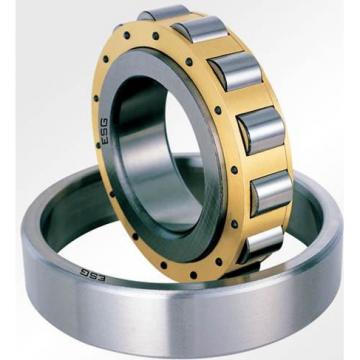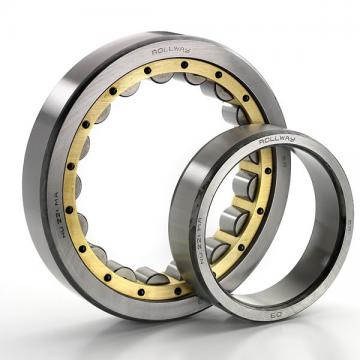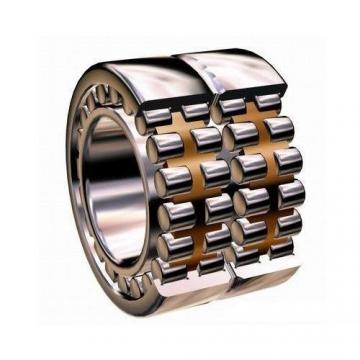All Categories
View All >-
 D1 NTN GS81206 Thrust cylindrical roller bearingsSee More>
D1 NTN GS81206 Thrust cylindrical roller bearingsSee More> -
 Dimension S4 TIMKEN NNU4068MAW33 Cylindrical Roller Radial BearingSee More>
Dimension S4 TIMKEN NNU4068MAW33 Cylindrical Roller Radial BearingSee More> -
 Backing Housing Diameter Ds TIMKEN A-5236-WS A5200 Metric Cylindrical Roller Radial BearingSee More>
Backing Housing Diameter Ds TIMKEN A-5236-WS A5200 Metric Cylindrical Roller Radial BearingSee More> -
 Angle of Chamfer r1smin TIMKEN 780RX3141 Four-Row Cylindrical Roller Radial BearingsSee More>
Angle of Chamfer r1smin TIMKEN 780RX3141 Four-Row Cylindrical Roller Radial BearingsSee More>
Featured Products
Our Manufacturer with main products: Thrust cylindrical roller bearings, Cylindrical Roller Radial Bearing, A5200 Metric Cylindrical Roller Radial Bearing
-
 Backing Housing Diameter Ds TIMKEN A-5236-WS A5200 Metric Cylindrical Roller Radial Bearing
Backing Housing Diameter Ds TIMKEN A-5236-WS A5200 Metric Cylindrical Roller Radial Bearing
-
 O.D. D TIMKEN A-5244-WM A5200 Metric Cylindrical Roller Radial Bearing
O.D. D TIMKEN A-5244-WM A5200 Metric Cylindrical Roller Radial Bearing
-
 Thermal Speed Ratings - Grease TIMKEN A-5220-WS A5200 Metric Cylindrical Roller Radial Bearing
Thermal Speed Ratings - Grease TIMKEN A-5220-WS A5200 Metric Cylindrical Roller Radial Bearing
-
 Geometry Factor Cg3 TIMKEN A-5234-WS A5200 Metric Cylindrical Roller Radial Bearing
Geometry Factor Cg3 TIMKEN A-5234-WS A5200 Metric Cylindrical Roller Radial Bearing
-
 Static Load Rating Co TIMKEN A-5224-WS A5200 Metric Cylindrical Roller Radial Bearing
Static Load Rating Co TIMKEN A-5224-WS A5200 Metric Cylindrical Roller Radial Bearing
-
 DUR/DOR F/E TIMKEN A-5232-WS A5200 Metric Cylindrical Roller Radial Bearing
DUR/DOR F/E TIMKEN A-5232-WS A5200 Metric Cylindrical Roller Radial Bearing
-
 Width B TIMKEN A-5238-WS A5200 Metric Cylindrical Roller Radial Bearing
Width B TIMKEN A-5238-WS A5200 Metric Cylindrical Roller Radial Bearing
-
 DUR/DOR F/E TIMKEN A-5228-WS A5200 Metric Cylindrical Roller Radial Bearing
DUR/DOR F/E TIMKEN A-5228-WS A5200 Metric Cylindrical Roller Radial Bearing
-
 Dynamic Load Rating C11 TIMKEN A-5226-WS A5200 Metric Cylindrical Roller Radial Bearing
Dynamic Load Rating C11 TIMKEN A-5226-WS A5200 Metric Cylindrical Roller Radial Bearing
-
 DUR/DOR F/E TIMKEN A-5230-WS A5200 Metric Cylindrical Roller Radial Bearing
DUR/DOR F/E TIMKEN A-5230-WS A5200 Metric Cylindrical Roller Radial Bearing
-
 Thermal Speed Ratings - Grease TIMKEN A-5240-WM A5200 Metric Cylindrical Roller Radial Bearing
Thermal Speed Ratings - Grease TIMKEN A-5240-WM A5200 Metric Cylindrical Roller Radial Bearing
-
 Chamfer r1smin4 TIMKEN A-5222-WS A5200 Metric Cylindrical Roller Radial Bearing
Chamfer r1smin4 TIMKEN A-5222-WS A5200 Metric Cylindrical Roller Radial Bearing
-
 Geometry Factor Cg3 TIMKEN A-5248-WM A5200 Metric Cylindrical Roller Radial Bearing
Geometry Factor Cg3 TIMKEN A-5248-WM A5200 Metric Cylindrical Roller Radial Bearing
-
 Angle of Chamfer r1smin TIMKEN 780RX3141 Four-Row Cylindrical Roller Radial Bearings
Angle of Chamfer r1smin TIMKEN 780RX3141 Four-Row Cylindrical Roller Radial Bearings
-
 Outer-Ring Set TIMKEN 560RX2644 Four-Row Cylindrical Roller Radial Bearings
Outer-Ring Set TIMKEN 560RX2644 Four-Row Cylindrical Roller Radial Bearings
-
 Number of Lubrication Holes TIMKEN 690RX2966 Four-Row Cylindrical Roller Radial Bearings
Number of Lubrication Holes TIMKEN 690RX2966 Four-Row Cylindrical Roller Radial Bearings
-
 Type TIMKEN 650RX2803A Four-Row Cylindrical Roller Radial Bearings
Type TIMKEN 650RX2803A Four-Row Cylindrical Roller Radial Bearings
-
 Bore d TIMKEN 460RX2371 Four-Row Cylindrical Roller Radial Bearings
Bore d TIMKEN 460RX2371 Four-Row Cylindrical Roller Radial Bearings
-
 Static Load Rating Co TIMKEN 761RX3166 Four-Row Cylindrical Roller Radial Bearings
Static Load Rating Co TIMKEN 761RX3166 Four-Row Cylindrical Roller Radial Bearings
-
 Weight TIMKEN 600RX2643B Four-Row Cylindrical Roller Radial Bearings
Weight TIMKEN 600RX2643B Four-Row Cylindrical Roller Radial Bearings
-
 Number of Lubrication Holes TIMKEN 730RX3064 Four-Row Cylindrical Roller Radial Bearings
Number of Lubrication Holes TIMKEN 730RX3064 Four-Row Cylindrical Roller Radial Bearings
-
 Width B TIMKEN 280RYL1782 Four-Row Cylindrical Roller Radial Bearings
Width B TIMKEN 280RYL1782 Four-Row Cylindrical Roller Radial Bearings
-
 DUR/DOR F/E TIMKEN 340RYL1963 Four-Row Cylindrical Roller Radial Bearings
DUR/DOR F/E TIMKEN 340RYL1963 Four-Row Cylindrical Roller Radial Bearings
-
 DUR/DOR F/E TIMKEN 200RYL1567 Four-Row Cylindrical Roller Radial Bearings
DUR/DOR F/E TIMKEN 200RYL1567 Four-Row Cylindrical Roller Radial Bearings
-
 O.D. D TIMKEN 950RX3723 Four-Row Cylindrical Roller Radial Bearings
O.D. D TIMKEN 950RX3723 Four-Row Cylindrical Roller Radial Bearings
-
 Backing Shaft Diameter ds TIMKEN 300RX1846 Four-Row Cylindrical Roller Radial Bearings
Backing Shaft Diameter ds TIMKEN 300RX1846 Four-Row Cylindrical Roller Radial Bearings
-
 Width C TIMKEN 500RX2345A Four-Row Cylindrical Roller Radial Bearings
Width C TIMKEN 500RX2345A Four-Row Cylindrical Roller Radial Bearings
-
 Lubrication Groove g TIMKEN 571RX2622 Four-Row Cylindrical Roller Radial Bearings
Lubrication Groove g TIMKEN 571RX2622 Four-Row Cylindrical Roller Radial Bearings
-
 DUR/DOR F/E TIMKEN 200RYL1585 Four-Row Cylindrical Roller Radial Bearings
DUR/DOR F/E TIMKEN 200RYL1585 Four-Row Cylindrical Roller Radial Bearings
-
 Backing Housing Diameter Ds TIMKEN 330RX1922 Four-Row Cylindrical Roller Radial Bearings
Backing Housing Diameter Ds TIMKEN 330RX1922 Four-Row Cylindrical Roller Radial Bearings
-
 Static Load Rating Co TIMKEN 1040RX3882 Four-Row Cylindrical Roller Radial Bearings
Static Load Rating Co TIMKEN 1040RX3882 Four-Row Cylindrical Roller Radial Bearings
-
 Width B TIMKEN 260RYL1744 Four-Row Cylindrical Roller Radial Bearings
Width B TIMKEN 260RYL1744 Four-Row Cylindrical Roller Radial Bearings
-
 Chamfer rsmin TIMKEN 600RX2744 Four-Row Cylindrical Roller Radial Bearings
Chamfer rsmin TIMKEN 600RX2744 Four-Row Cylindrical Roller Radial Bearings
-
 Chamfer r1smin2 TIMKEN 260RY1763 Four-Row Cylindrical Roller Radial Bearings
Chamfer r1smin2 TIMKEN 260RY1763 Four-Row Cylindrical Roller Radial Bearings
-
 Width C TIMKEN 820RX3264A Four-Row Cylindrical Roller Radial Bearings
Width C TIMKEN 820RX3264A Four-Row Cylindrical Roller Radial Bearings
-
 Type TIMKEN 850RX3304 Four-Row Cylindrical Roller Radial Bearings
Type TIMKEN 850RX3304 Four-Row Cylindrical Roller Radial Bearings
-
 Weight TIMKEN 300RXL1845 Four-Row Cylindrical Roller Radial Bearings
Weight TIMKEN 300RXL1845 Four-Row Cylindrical Roller Radial Bearings
-
 Inner-Ring Set TIMKEN 820RX3264D Four-Row Cylindrical Roller Radial Bearings
Inner-Ring Set TIMKEN 820RX3264D Four-Row Cylindrical Roller Radial Bearings
-
 Outer-Ring Set TIMKEN 230RYL1667 Four-Row Cylindrical Roller Radial Bearings
Outer-Ring Set TIMKEN 230RYL1667 Four-Row Cylindrical Roller Radial Bearings
-
 Inner-Ring Set TIMKEN 500RX2422 Four-Row Cylindrical Roller Radial Bearings
Inner-Ring Set TIMKEN 500RX2422 Four-Row Cylindrical Roller Radial Bearings
Thrust cylindrical roller bearings FAQS
QWhat's the design differences of the cylindrical roller bearings ?
ACylindrical roller bearings are available in many designs, series and sizes. The major design differences between the bearings presented in this section are in: the number of roller rows (one, two or four) the type of cage (with, without or special designs) Bearings with a cage can accommodate heavy radial loads, rapid accelerations and high speeds. Full complement bearings (without a cage) incorporate a maximum number of rollers and are therefore suitable for very heavy radial loads at moderate speeds. SKF high-capacity cylindrical roller bearings combine the high load carrying capacity of a full complement bearing with the high speed capability of a bearing with cage. the configuration of the inner and outer ring flanges (position and number of guide flanges)
QWhat's the different types of cylindrical roller bearings ?
ABearings of this type, the cylindrical rollers are in linear contact with the raceways. They have a high radial load capacity and are suitable for high speeds. There are different types designated as NU, NJ, NUP, N, NF (for single-row bearings), NNU, and NN (for double-row bearings depending on the design or absence of side ribs).
QHow to choose proper cylindrical roller bearings ?
ASome cylindrical roller bearings have no ribs on either the inner or outer ring, so the rings can move axially relative to each other. These can be used as free-end bearings. Cylindrical roller bearings, in which either the inner or outer rings has two ribs and the other ring has one, are capable of taking some axial load in one direction Double-row cylindrical roller bearings have high radial rigidity and are used primarily for precision machine tools. Pressed steel or machined brass cages are generally used, but sometimes molded polyamide cages are also used.
QWhat's the bearing feature of Cylindrical roller bearings
AHigh load carrying capacity High stiffness Accommodate axial displacement Except for bearings with flanges on both the inner and outer rings. Low friction The open flange design together with the roller end design and surface finish, promote lubricant film formation resulting in lower friction and higher axial load carrying capacity. Long service life The logarithmic roller profile reduces edge stresses at the roller/raceway contact and sensitivity to misalignment and shaft deflection. Enhanced operational reliability The surface finish on the contact surfaces of the rollers and raceways supports the formation of a hydrodynamic lubricant film. Separable and interchangeable The separable components of SKF cylindrical roller bearings are interchangeable . This facilitates mounting and dismounting, as well as maintenance inspections.
Hot Searches
- • Backing Housing Diameter Ds TIMKEN A-5236-WS A5200 Metric Cylindrical Roller Radial Bearing PDF
- • O.D. D TIMKEN A-5244-WM A5200 Metric Cylindrical Roller Radial Bearing PDF
- • Thermal Speed Ratings - Grease TIMKEN A-5220-WS A5200 Metric Cylindrical Roller Radial Bearing PDF
- • Geometry Factor Cg3 TIMKEN A-5234-WS A5200 Metric Cylindrical Roller Radial Bearing PDF
- • Static Load Rating Co TIMKEN A-5224-WS A5200 Metric Cylindrical Roller Radial Bearing PDF
- • DUR/DOR F/E TIMKEN A-5232-WS A5200 Metric Cylindrical Roller Radial Bearing PDF
- • Width B TIMKEN A-5238-WS A5200 Metric Cylindrical Roller Radial Bearing PDF
- • DUR/DOR F/E TIMKEN A-5228-WS A5200 Metric Cylindrical Roller Radial Bearing PDF
- • Dynamic Load Rating C11 TIMKEN A-5226-WS A5200 Metric Cylindrical Roller Radial Bearing PDF
- • DUR/DOR F/E TIMKEN A-5230-WS A5200 Metric Cylindrical Roller Radial Bearing PDF
- • Chamfer r1smin4 TIMKEN A-5222-WS A5200 Metric Cylindrical Roller Radial Bearing PDF
- • Geometry Factor Cg3 TIMKEN A-5248-WM A5200 Metric Cylindrical Roller Radial Bearing PDF
- Thrust cylindrical roller bearings
- D1 NTN GS81206 Thrust cylindrical roller bearings
- Minimum Buy Quantity NTN K81124T2 Thrust cylindrical roller bearings
- Weight / Kilogram NTN GS81213 Thrust cylindrical roller bearings
- Cylindrical Roller Radial Bearing
- Dimension S4 TIMKEN NNU4068MAW33 Cylindrical Roller Radial Bearing
- Width B TIMKEN NNU4980MAW33 Cylindrical Roller Radial Bearing
- Dimension S4 TIMKEN NNU4084MAW33 Cylindrical Roller Radial Bearing
- A5200 Metric Cylindrical Roller Radial Bearing
- Backing Housing Diameter Ds TIMKEN A-5236-WS A5200 Metric Cylindrical Roller Radial Bearing
- O.D. D TIMKEN A-5244-WM A5200 Metric Cylindrical Roller Radial Bearing
- Static Load Rating Co TIMKEN A-5224-WS A5200 Metric Cylindrical Roller Radial Bearing
- About Us
- Company Profile
- Contact Info
- Site Map
- Sitemaps


